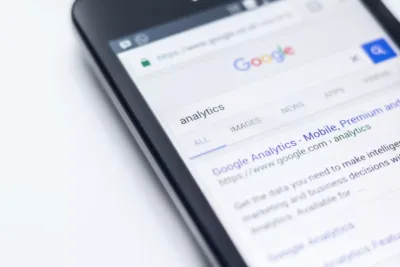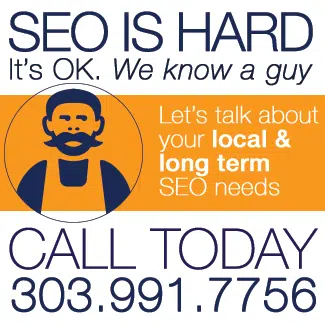Growing Your Customer Base Through Affordable Web Marketing
Bottom Line Up Front: Small businesses with professional websites earn 50% more revenue than those without. Moreover, 89% of businesses use their websites as their primary customer acquisition channel. The key isn’t expensive marketing—it’s strategic web presence that helps customers find you when they need your services.
Why Your Website is Your Most Important Employee
 Small businesses face a stark reality: 92% of business owners say a website is essential for credibility, yet 27% still don’t have one. Meanwhile, customers increasingly rely on online research before making purchasing decisions.
Small businesses face a stark reality: 92% of business owners say a website is essential for credibility, yet 27% still don’t have one. Meanwhile, customers increasingly rely on online research before making purchasing decisions.
The numbers tell a compelling story about what works. Furthermore, businesses investing in professional web presence consistently outperform competitors who rely solely on word-of-mouth marketing. Studies show that 76% of consumers check a website before visiting a store, which means your online presence directly impacts foot traffic.
When customers search for services like yours, they make split-second decisions about which businesses to trust. Therefore, your website needs to immediately communicate what you do, who you serve, and why they should choose you over competitors.
How Affordable Web Marketing Actually Works
The most effective approach isn’t about having the biggest budget—it’s about consistency and local focus. However, many small business owners waste money on generic marketing that doesn’t connect with their actual customers.
Smart business owners understand that websites remain the top customer acquisition channel, with 89% of businesses utilizing their sites to attract new customers. Additionally, the approach that works best combines several key elements working together.
Local Search Optimization
Local search has become the battleground for small business success. Research indicates that 99% of people search online for local business information, and 21% search for nearby businesses daily.
When someone searches for your services in your area, consequently, they’re demonstrating immediate purchase intent. The businesses that appear first in local search results capture most of these ready-to-buy customers.
Essential local optimization includes:
- Claiming and optimizing your Google Business Profile with current information
- Ensuring your name, address, and phone number match across all online directories
- Creating location-specific content that addresses local customer needs
- Building relationships with other local businesses for referrals and links
What Makes Web Marketing Affordable and Effective
The biggest misconception is that effective web marketing requires huge budgets. In reality, nearly one-third of small businesses spend less than $500 on their websites, proving you don’t need massive investment to compete.
Additionally, the most successful strategies focus on doing a few things exceptionally well rather than trying everything at once. This focused approach delivers better results while staying within realistic budgets.
Content That Connects With Real Customers
Instead of generic content that could apply to any business, effective web marketing speaks directly to your ideal customers’ specific problems. Moreover, this personalized approach helps you compete against larger companies with bigger marketing budgets.
Your content strategy should address the actual questions customers ask when they call or visit your business. Therefore, documenting these common questions and creating content that answers them naturally improves your search visibility while helping customers.
Does Affordable Web Marketing Really Work?
Skeptical business owners often wonder if affordable approaches can compete with larger competitors’ marketing budgets. The evidence suggests focused strategies often outperform scattered expensive campaigns.
Consider these compelling statistics: Search engine optimization contributes to 25% of new customer acquisitions, while local businesses that optimize for “near me” searches see over 500% growth in mobile search traffic.
Furthermore, small businesses have distinct advantages that corporations can’t replicate—personal relationships, local expertise, and the flexibility to adapt quickly based on what works in their specific market.
How Much Should Small Businesses Invest in Web Marketing?
Budget allocation varies widely, but marketing professionals typically recommend investing 5-10% of revenue in marketing activities. However, many successful small businesses start with smaller amounts like $200-500 monthly and scale based on results.
The key insight is that consistent smaller investments often produce better long-term results than sporadic larger expenditures. Additionally, focusing budget on proven strategies rather than experimental tactics ensures better return on investment.
Measuring What Actually Matters
Rather than tracking vanity metrics like website visits, successful businesses focus on metrics that directly impact revenue:
- Local search ranking positions for services you actually provide
- Phone calls and form submissions from website visitors
- Customer inquiries that convert into paying clients
- Online reviews and local reputation management
Building Your Affordable Web Marketing Foundation
Starting with solid fundamentals prevents costly mistakes and ensures every dollar spent contributes to business growth. Moreover, a methodical approach helps you avoid the common trap of jumping between different strategies without giving any sufficient time to work.
Your Website as Customer Acquisition Hub
Modern customers expect certain basic information to be easily accessible on your website. However, many small business websites fail to provide essential details that influence purchasing decisions.
Critical elements include:
- Clear description of services with local relevance
- Contact information prominently displayed on every page
- Customer testimonials and reviews that build trust
- Mobile-optimized design that works on all devices
The Affordable Web Guy team specializes in creating these foundational elements for small businesses, ensuring every website element contributes to customer acquisition rather than just looking professional.
What Customers Really Want From Local Businesses
Understanding customer behavior helps you create web marketing that actually influences purchasing decisions. Research shows that customers want immediate access to specific information when considering local service providers.
Most importantly, customers need to quickly verify that your business can solve their specific problem. Therefore, your web marketing should immediately communicate your expertise and local availability.
Trust Signals That Drive Action
Local customers rely on several key indicators when choosing service providers. Additionally, these trust signals become even more important when customers can’t visit your physical location before making decisions.
Essential trust building includes:
- Current and complete Google Business Profile information
- Recent customer reviews and testimonials
- Clear contact information and response time expectations
- Professional appearance that reflects service quality
You can explore successful examples through the small business website consultation process to see how other local businesses effectively build customer trust online.
Common Mistakes That Waste Marketing Budget
Most small businesses make predictable errors that reduce their web marketing effectiveness while increasing costs. However, recognizing these patterns helps you avoid expensive trial-and-error learning.
The biggest mistake involves trying to target everyone rather than focusing on ideal customers. Successful businesses dominate specific niches rather than attempting broad appeal that resonates with no one.
Mobile Optimization Isn’t Optional Anymore
With 63% of website traffic coming from mobile devices, businesses with mobile-unfriendly websites lose most potential customers before they ever see your services. Moreover, mobile users have even less patience for slow-loading or difficult-to-navigate websites.
Mobile optimization requirements include:
- Fast loading speeds (under 3 seconds)
- Easy-to-read text without zooming
- Simple navigation that works with fingers
- Click-to-call phone numbers for immediate contact
Making Web Marketing Work for Your Specific Business
Generic marketing advice rarely works for individual businesses because every market has unique characteristics. Instead, effective strategies adapt proven principles to your specific situation and customer base.
Furthermore, the most successful small businesses start with one or two focused strategies and expand gradually based on results. This methodical approach prevents overwhelm while building sustainable marketing systems.
Understanding Your Local Market
Local market research doesn’t require expensive studies—it involves paying attention to how customers actually find and choose businesses like yours. Additionally, this information helps you create marketing messages that resonate with real purchasing decisions.
Simple research methods include:
- Asking new customers how they found your business
- Monitoring which services generate the most inquiries
- Observing seasonal patterns in customer demand
- Tracking which marketing efforts produce actual sales
Getting Started Without Overwhelming Your Schedule
The most effective web marketing systems run automatically once properly established. However, initial setup requires focused effort to ensure every element contributes to customer acquisition rather than just online presence.
Many business owners delay getting started because they assume web marketing requires constant attention. In contrast, well-designed systems work continuously while you focus on serving customers and running your business.
The foundation starts with professional web presence that clearly communicates your value to potential customers. After that, systematic optimization based on actual results helps you improve effectiveness while staying within your available time and budget.
Ready to build web marketing that actually grows your customer base? The focused approach works better than scattered efforts across multiple platforms, and the results speak for themselves when done consistently.


Leave A Comment